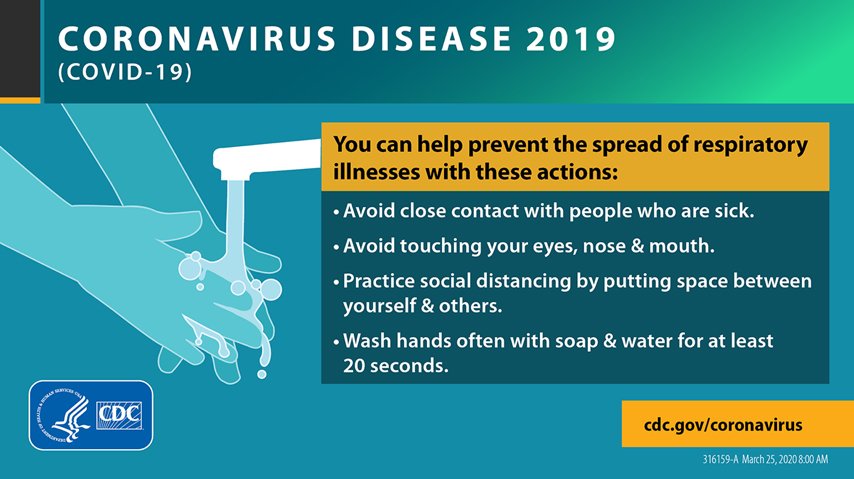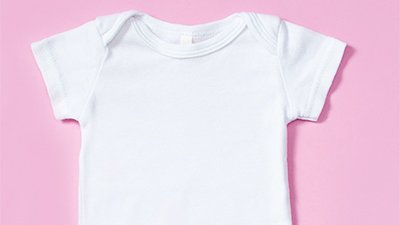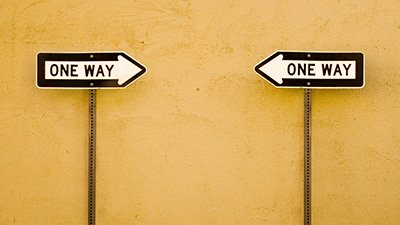
Should I Start Wearing a Facemask and Gloves?
Dr. Andrew Fabich, professor of microbiology at Truett McConnell University, addresses the latest research on facemasks and practical aspects of wearing gloves to prevent the spread of coronavirus.
Where I live, the governor has put an executive order in place that we are to shelter in place. Most states around the country and the world are experiencing similar restrictions. With our shelter in place, we are allowed to go to the grocery store, pharmacy, and work if considered an “essential” employee (e.g., doctors). We are to be practicing social distancing to mitigate the spread of COVID-19.1 Social distancing started in the US around the end of March, and yet COVID-19 has continued to rise.2
Why Isn’t It Working Better?
The analysis from my informal poll was that everyone thinks they’re social distancing, when in reality I estimate that only about 5% of the population is.
I conducted an informal poll on social media to determine whether anyone would admit to not social distancing and I was shocked to find out that everyone claimed to be socially distancing. When I followed up with a question about why the disease is spreading, only a few people actually realized the true answer. The analysis from my informal poll was that everyone thinks they’re social distancing, when in reality I estimate that only about 5% of the population is. Most people are unaware of how they’re not actually socially distancing. This fact is only compounded by the fact that half of people infected with COVID-19 don’t show any symptoms.
According to social distancing, the first rule listed is to avoid close contact with sick people, but most of society are not trained in recognizing sick people in the public and just carry on assuming everyone’s healthy when that’s just plain false—right now, act as if everyone you come in contact with at the grocery store or pharmacy is sick with something.
The second rule listed is to avoid touching your face. One group studied how many times future doctors touched their face and found that it was 23 times per hour on average.3
The third rule listed is to keep six feet away from everyone. How did we think we were going to shop at the grocery store that has aisles big enough to fit two carts across (two carts combined are roughly 46 inches with another two inches on either side of the carts for clearance, which is 20 inches shy of six feet). Let alone most people don’t have a clue about just how far apart six feet is (good friends stand less than three feet apart and strangers are just four feet away). On top of that, a recent scientific paper found that people infected with COVID-19 were shedding viruses that could be detected four meters away (that’s approximately 14 feet—the distance across a two-lane road).
The fourth rule listed is to wash your hands for 20 seconds. The average American only washes their hands six seconds! For information about proper handwashing (and why the 20-second rule is suggested, but we can do better!), investigate CDC’s guidelines and please watch my video below.
That means that you reading this article have about a 95% chance of not actually practicing social distancing, contrary to what you think.
Finally, the one rule not listed officially as social distancing is to always cover your cough/sneeze in your elbow. This practice is a hard one because we’re taught growing up to use our hands, and old habits are hard to break. And if you’re wondering why the elbow, it’s because we cannot force our elbow to touch our face and get us sick.
That means that you reading this article have about a 95% chance of not actually practicing social distancing, contrary to what you think.

My observation is particularly relevant because the masses are going to only two places: the grocery store and the pharmacy.4 The only logical conclusion is that COVID-19 is spreading in those locations. This is probably why the White House’s coronavirus task force recently said not to go to these locations for the next two weeks.5
So if these two locations are the hotspots right now, should I start wearing a facemask and gloves when I need to go there?
Do Facemasks Prevent Spread of COVID-19?
In the research lab, we use special filtration devices that have small holes in them as small as 0.22 µm.6 The average bacteria size is 1 µm by 3 µm (like E. coli), so those filter holes are smaller than the bacteria, but allow your breath to go through uncontaminated. While the 0.22 µm filters work for bacteria, they do not work for viruses because of their extremely small size—part of the historical definition of viruses.
The first virus discovered was Tobacco Mosaic Virus (TMV) by Martinus Beijerinck.7 He took a diseased tobacco plant, ground it up, placed the liquid through a filter, and was able to infect another tobacco plant using the filtrate. Beijerinck coined the term virus, which means venom in Latin. The point is that viruses are so small that they easily pass through microscopic holes we can’t even see. The largest virus to date is the Pithovirus sibericum, which is ~1.5 µm in length by 500 nm in diameter.8 So the largest virus might get caught by a standard filter, but almost all other viruses range in size from as small as 20 nm up to 450 nm—meaning most pass through the lab filter size of 0.22 µm.9 This is significant since the smallest holes on average for a surgical mask is 16.9 µm.10 Even the largest of viruses could fit through the holes in a surgical mask, so, in a previous article, I said there was no data suggesting the use of surgical masks was warranted.
Change of Face?
With that data now available, I have changed my mind about surgical masks.
But then a bombshell of a paper was published on April 3, 2020, looking at the efficiency of surgical masks to prevent transmission of the common cold, the flu, and COVID-19.11 Experiments were set up with people confirmed having each of these three viruses and tested the ability of the subjects to transmit the virus through the surgical mask. The authors of the scientific publication found that surgical masks were actually extremely effective at preventing transmission of these viruses. The authors went on to explain that surgical masks are probably capturing the respiratory droplets in our breath that are teeming with viruses. So the respiratory droplets never leave the inside of the mask and go on to infect the next person. With that data now available, I have changed my mind about surgical masks.
Recently, the CDC came out and said that everyone should be wearing a face mask (homemade or purchased surgical mask) when going out in public. Some say there was pressure on the CDC to make that statement,12 but it turns out to be the right thing to do. Technically, this study did not measure the ability of COVID-19 in the air to enter through the surgical mask and infect someone. However, I think it stands to reason that if the surgical mask blocks virus from escaping an infected individual that it will work in just the opposite way (and protect you).
I now recommend a home-made face covering of some kind. I largely recommend that we should try to help the global demand for surgical masks by reserving them only for those that are high risk13 and medical professionals.
And there’s one more thing you can do. When I was in graduate school, I had the same professor for both Microbial Pathogenesis and Cellular Microbiology. He is a world-leading expert on the anthrax toxin and is married to a medical doctor. He shared with us about one of his practices in which he would stop breathing in an elevator if someone sneezed or coughed (i.e., hold his breath). While socially awkward, it makes perfect sense from an infectious disease perspective. I have been holding my breath when at the grocery store and I’m within six feet of someone to prevent contracting COVID-19.
Do Gloves Prevent Spread of COVID-19?
I’ve been wearing gloves now in a research setting since 2001. My doctoral dissertation was about the hamburger pathogen (E. coli O157:H7). Over the years, I’ve noticed that most of the population has not been trained to wear gloves and handle infectious diseases. But the gloves have been flying off shelves in grocery stores and pharmacies lately. Almost everyone thinks that these gloves will protect them from getting COVID-19.
While gloves can protect you from getting COVID-19 on your hands, my issue is that almost everyone isn’t disciplined or trained in not touching their face.
While gloves can protect you from getting COVID-19 on your hands, my issue is that almost everyone isn’t disciplined or trained in not touching their face. When I worked with the hamburger pathogen, I had to make the conscious effort to not touch my face because I could die if I did. Almost no one gets that kind of training and so people wearing gloves right now aren’t doing it properly. Recently, I went to the grocery store and saw an elderly woman wearing a face mask and gloves. As she approached her car, I was watching to see whether she would do the right thing or not. I waited to see if she would remove her gloves before touching the door handle on her car or not. Not only did she touch the door handle with the gloves on, but she went inside her car and touched the steering wheel, A/C, and radio before she finally removed her gloves. She’s just one example among hundreds of millions worldwide that are doing the same thing (including touching their face with the gloves on while out in public). I concur with Dr. Bettina Fries, chief of the Division of Infectious Diseases at Stony Brook University in New York, who said, “Gloves don’t really protect you.”14
Most people are unaware that washing hands with soap and water (not merely for 20 seconds, but as I demonstrate proper handwashing in the video above) is far better than any hand sanitizer available.15 When I go to the grocery store lately, I have been allowing my left hand to touch anything that can be contaminated and used my right hand to handle everything else that’s clean (it’s a little cumbersome pushing the grocery cart, but it’s doable). For me, the deal breaker has been touching the keypad after inserting my debit card to pay for groceries. Before actually getting in my car after a visit to the grocery store, I go back in and wash my hands according to the video and then head home. And people should also know that proper handwashing doesn’t actually remove 100% of the germs, but it knocks down their numbers to a point that you can no longer get sick when touching your face.16
Don’t Spread Your Germs: Spread This Instead
I look around society and the world today and have observed that the church is in a panic when it shouldn’t be.
I look around society and the world today and have observed that the church is in a panic when it shouldn’t be. The worst case scenario of what could happen to a believer with COVID-19 is the best thing that could happen to a believer (2 Corinthians 5:7–9), though we should never be careless with our life or of those around us (John 7:8, Ephesians 5:29, Philippians 2:3–4). But it seems to me that right now, the church is afraid of dying more than getting out in the public to spread the gospel of Jesus Christ, which protects us from the second death. We shouldn’t be spreading COVID-19 as the church, but we have been commanded to spread the gospel (Matthew 28:18–20). Nothing can stop the power of the gospel, not even the gates of Hell (Matthew 16:18). In another previous article, I listed some recommendations on how to fulfil the Great Commission even in the midst of a pandemic.
So you can see that we can spread the gospel even right now if we’re smart and informed about the right practices for today’s world. My encouragement to each of you is to take my suggestions to heart and begin caring for your neighbor and witnessing—even if you can’t get out, through social media, prayer, and supporting ministries that are—to this lost and dying world that desperately needs the good news.
Footnotes
- CDC, “Social Distancing, Quarantine, and Isolation,” https://www.cdc.gov/coronavirus/2019-ncov/prevent-getting-sick/social-distancing.html.
- If social distancing were working, there would be a decreased slope on the logarithmic graph of just the US data on this site: https://coronavirus.jhu.edu/map.html.
- Faith Karimi, “One big coronavirus challenge is how to stop touching your face,” March 19, 2020, https://www.cnn.com/2020/03/08/health/coronavirus-touching-your-face-trnd/index.html.
- I see a third location we’re going to is restaurant take-out places. But this place was not specifically mentioned in the next footnote, so I didn’t include it with the other two. I think the same is true for restaurant take-out places right now.
- In particular, Dr. Deborah Birx said, “The next two weeks are extraordinarily important . . . This is the moment to not be going to the grocery store, not going to the pharmacy, but doing everything you can to keep your family and your friends safe and that means everybody doing the 6-feet distancing, washing their hands.” See Jason Slotkin and Barbara Sprunt, “Trump Warns 'One Of The Toughest Weeks' Is Ahead, Says To Brace For 'A Lot Of Death,'” April 4, 2020, https://www.npr.org/2020/04/04/826741317/federal-government-implements-relief-as-nation-reels-from-coronavirus-pandemic.
- There are 1,000 µm in 1 mm. We can see 1 mm on a ruler that has metric, but you have to divide that millimeter 1,000 times to gain an appreciation for how small a micrometer is.
- M. W. Beijerinck, “Über ein Contagium vivum fluidum als Ursache der Fleckenkrankheit der Tabaksblätter” (PDF), Verhandelingen der Koninklijke Akademie van Wetenschappen Te Amsterdam (in German), 65 (1898):1–22.
- https://bionumbers.hms.harvard.edu/bionumber.aspx?id=111143&ver=1&trm=largest+virus.
- https://bionumbers.hms.harvard.edu/files/Size%20and%20structure%20of%20viruses.pdf.
- Karen K. Leonas and Cindy R. Jones, The Relationship of Fabric Properties and Bacterial Filtration Efficiency for Selected Surgical Face Masks. Journal of Textile and Apparel, Technology, and Management 3, no. 2(2003): 1-8.
- Nancy H. L. Leung, Daniel K. W. Chu, Eunice Y. C. Shiu, Kwok-Hung Chan, et al. “Respiratory virus shedding in exhaled breath and efficacy of face masks,” Nature Medicine (April 3, 2020), https://doi.org/10.1038/s41591-020-0843-2.
- Nicole Chavez, Dakin Andone and Christina Maxouris, “CDC recommends Americans wear face masks voluntarily in public but some officials say they felt 'pressured' to draft new guidelines,” April 3, 2020, https://www.cnn.com/2020/04/03/health/us-coronavirus-friday/index.html.
- Check these guidelines to determine whether you’re high-risk or not: https://www.cdc.gov/coronavirus/2019-ncov/need-extra-precautions/people-at-higher-risk.html.
- Ann Maloney, “Grocery shopping during the coronavirus: Wash your hands, keep your distance and limit trips,” April 2, 2020, https://www.washingtonpost.com/news/voraciously/wp/2020/03/19/grocery-shopping-during-the-coronavirus-wash-your-hands-keep-your-distance-and-limit-trips/.
- E. Tuladhar, W.C. Hazeleger, M. Koopmans, M.H. Zwietering, et al., “Reducing viral contamination from finger pads: handwashing is more effective than alcohol-based hand disinfectants,” Journal of Hospital Infection, 90, no. 3 (2015):226–234, doi:10.1016/j.jhin.2015.02.019.
- If you still end up deciding to wear gloves, then please do so responsibly and make sure you remove them properly and throw them away in the garbage (don’t litter).
Recommended Resources

Answers in Genesis is an apologetics ministry, dedicated to helping Christians defend their faith and proclaim the good news of Jesus Christ.
- Customer Service 800.778.3390
- © 2024 Answers in Genesis




